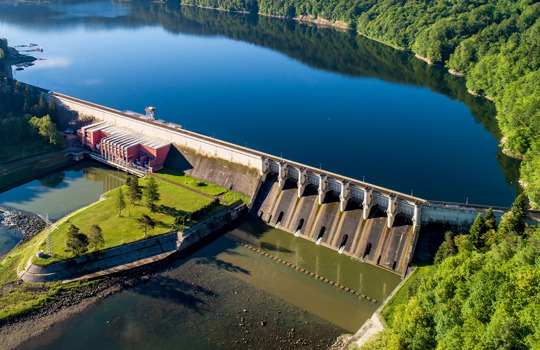Energy thoughts: As volatility continues, we need risk management as a way to get off the roller coaster – or at least to slow it down
The year on the gas market has started with sharp price fluctuations and the volatility is likely to keep going throughout the year. Managing price risks is a tool that is increasingly gaining interest.
A rollercoaster ride was not on our wish list for early 2025. We started the European gas market year of 2025 at 50 EUR/MWh price levels. On 10 January, we were trading at 43 EUR/MWh, which is down 15%. In the equity markets this would be identified as correction territory.
Fast forward to 11 February and the market had climbed to 59 EUR/MWh – in other words up by 37%. The next move was down as prices collapsed to 36 EUR/MWh by 7 March creating a drop of 38 %.
In other markets, this would have been seen as a historical event, as more than a 20% price drop is a bear market indicator. In the gas (and power) market, it’s nowadays more common to see these kinds of price fluctuations.
We ended Q1 at around 40 EUR/MWh, which is about 20% lower than the beginning of the quarter.
Could we have done something? Yes!
I wrote late last year that this winter gas inventories should be adequate to weather the cold period. And that turned out to be the case, at least on average.
I remember talking to some of our customers in early February and they were a bit concerned. They were wondering if they could have done something to hedge against the price surge. “Yes, you could have”, I replied.
Price risk management is a tool that is discussed a lot, but surprisingly rarely used. The gas price fluctuations that we have experienced during the last three months is a good reminder to us.
You can hedge the positions according to your own view of the timing, but you can also ask for advice from an experienced portfolio manager. Gasum Portfolio Services can help you with the decision-making process both in gas and power market related risks.
Russian Gas – (when) will it return to European market?
The overall supply–demand balance on the LNG market has not changed. As the supply side is going to increase significantly from USA and Qatar during next two to three years, some people have speculated that market prices will drop already this year.
That depends heavily on potential pipeline gas and LNG supplies from Russia. If the Russian volumes start to flow again, then we could see a market reaction downwards.
At the moment this scenario seems very unlikely. Even with President Trump taking an active role in the potential cease fire negotiations, there is very little pointing towards a quick end to the war. The peace discussions are going to take a long time.
The outlining of detailed conditions for Russian gas molecules to start flowing again to Europe are going to face delays. Let alone the pipeline utilization agreements, new sourcing agreements and the re-activation of the old contracts.
More likely we could envision Russian gas re-entering the European market sometime in 2026, even in the case of a peace deal being signed already in the summer of 2025.
Uncertainty and volatility to continue
European natural gas prices have now held near 40 EUR/MWh as traders assess the region’s supply outlook towards the rest of the year. The European economy is not in its strongest condition and the current tariff regime by the US is not supporting global economic growth.
Unfortunately, this trend is not expected to be changing anytime soon, therefore the following questions remain unanswered: What is the availability of LNG to refill storages in the coming summer? Are Asian buyers coming back to the market if LNG prices drop to 10 USD/MMBtu in other words to about 30 EUR/MWh levels? If no contango in the future price curve, who will fill the storages?
The 1 November target of 90% gas storage filling requirements by the EU is an interesting topic to follow. Partly due to heavy opposition by the market players and concerns by member states, The EU has opened up the proposed requirement a bit.
The key proposed amendments would allow for a 5% downward tolerance to the 1 November target. This revised storage regulation is still being examined by the EU and there could be further amendments before member states plan to vote on the matter on 24 April.
The added flexibility would reduce the pressure on governments to intervene if storage filling rates fall short of the targets. I still wouldn’t be surprised if there is a price move upwards towards 60 EUR/MWh in the August–September period due to the storage filling requirement. Volatility is here to stay.



